Owner Hamburg America Line Port of registry Hamburg Length 213 m | Operator Germany Yard number 264 Beam 24 m | |
 | ||
Name 1906–19 SS Kaiserin Auguste Victoria Builder Vulcan AG shipyard
in Stettin, German Empire | ||
RMS Empress of Scotland was the later name of SS Kaiserin Auguste Victoria, an ocean liner built in 1905-1906 by Vulcan AG shipyard in Stettin (now Szczecin, Poland) for the Hamburg America Line. The ship regularly sailed between Hamburg and New York City until the outbreak of war in Europe in 1914. At the end of hostilities, re-flagged the USS Kaiserin Auguste Victoria, she transported American troops from Europe to the United States. For a brief time Cunard sailed the re-flagged ship between Liverpool and New York.
Contents
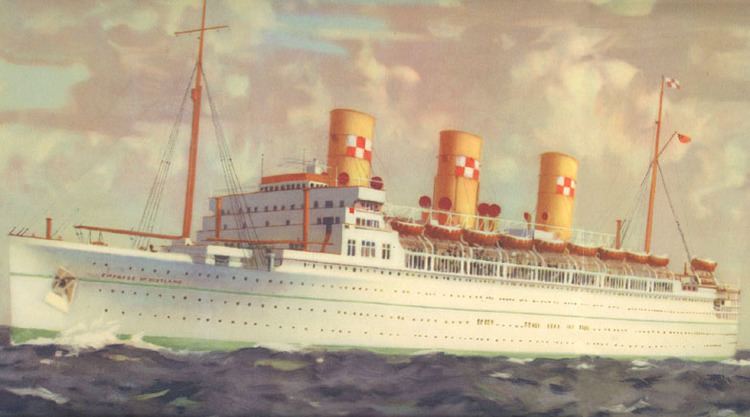
The ship was refitted for Canadian Pacific Steamships (CP) and in 1921, she was renamed Empress of Scotland—the first of two CP ships to bear that name.
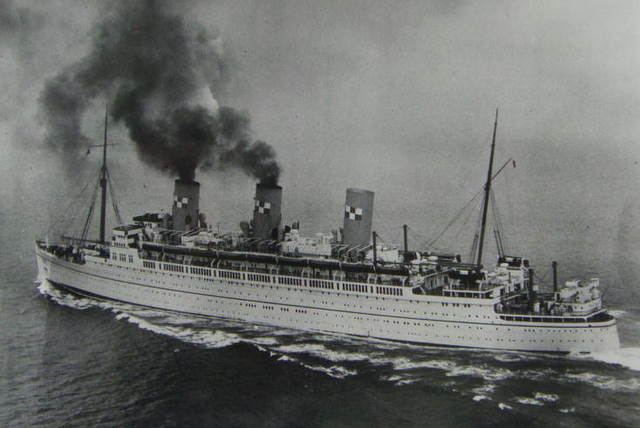
History

The SS Kaiserin Auguste Victoria was built by AG Vulcan Stettin in Stettin on the Baltic in 1905-1906. The new ship was ordered by the expanding Hamburg America Line. At 24,000 plus tons she was the largest passenger liner in the world from 1905 to 1907 until the advent of Cunard's Lusitania.
German ship
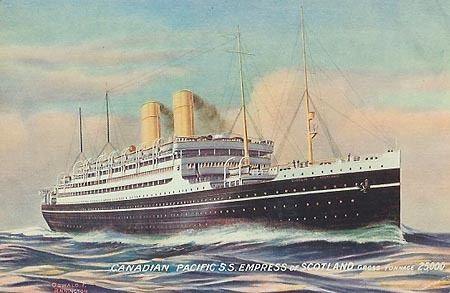
When the keel was laid down as "Ship #264," this vessel was intended to be named the SS Europa; she was to have been a sister ship to the SS Amerika which was being built by Harland and Wolff in Belfast during the same period. At the time of her launching on 29 August 1905, her only peer in size was the slightly smaller Amerika which had been launched days earlier.
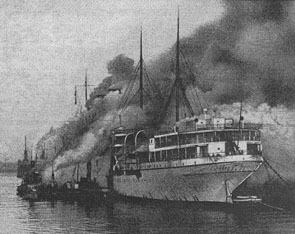
German Empress Augusta Victoria of Schleswig-Holstein permitted the vessel to be named after her and participated in the launching ceremonies.
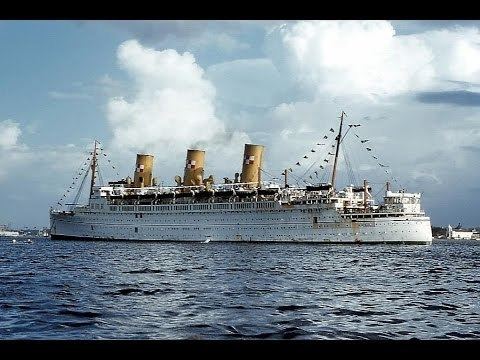
The 24,581-ton vessel had a length of 677.5 feet, and her beam was 77.3 feet. She had two funnels, four masts, twin propellers, and an average speed of 18 knots. The ocean liner provided accommodation for 472 first-class passengers and for 174 second class passengers. There was room for 212 third-class passengers and for 1,608 fourth-class passengers.
The SS Kaiserin Auguste Victoria left Hamburg on 10 May 1906 on her maiden voyage to Dover, Cherbourg, and New York under the command of Captain Hans Ruser. Thereafter, she regularly sailed the route between Hamburg and New York. In 1910 the ship was to be used in experiments for the world's first ship-to-shore airplane flights by pilot John McCurdy. A special platform was built on Kaiserin Auguste Victoria to provide a runway for McCurdy's plane. McCurdy abandoned the attempt when rival pilot Eugene Ely flew off the deck of the "USS Birmingham" off of Hampton Roads Virginia in 1910. Kaiserin Auguste Victoria then returned to sailing on her regular schedule. A similar experiment using airplanes launched at sea to carry mail was carried out on the SS Bremen twenty years later. In June 1914, Kaiserin August Victoria made her last voyage under a German flag, sailing from Hamburg to Southampton, Cherbourg, and New York, and returning to Hamburg.
During World War I, Kaiserin Auguste Victoria stayed in the port of Hamburg starting in August 1914. In March 1919, she was surrendered to Britain.
American ship
The ship was chartered by the United States Shipping Board, and the U.S.S. Kaiserin Auguste Victoria carried American troops from Europe to America. The ship made five crossings between France and the United States, bringing troops home from the war. This temporary U.S. Navy vessel flew the American flag as American troops were repatriated.
British ship
On 14 February 1920, the ship was decommissioned and chartered to Cunard, sailing under a British flag. The SS Kaiserin Auguste Victoria sailed between Liverpool and New York although her life with Cunard would be very short lived.
Canadian ship
On 13 May 1921, the ship was sold to Canadian Pacific; she was renamed Empress of Scotland. The new Empress was refitted to carry 459 first-class passengers, 478 second-class passengers, and 960 third-class passengers. The ship was converted to fuel oil at the same time.
On 22 January 1922, Empress of Scotland embarked on her first voyage from Southampton to New York. On 22 April 1922, she made her second trans-Atlantic voyage, sailing the Southampton-Cherbourg-Quebec route.
On 14 June 1922 she transferred to the Hamburg-Southampton-Cherbourg-Quebec service. In 1923, she was involved in a collision with the SS Bonus at Hamburg.
In 1926, Empress was refitted again, this time with accommodations for first-class, second-class, tourist-class, and third-class passengers. In 1927, another refit resulted in first-class, tourist-class, and third-class accommodations.
On 11 October 1930, Empress of Scotland made her last voyage from Southampton to Cherbourg and Quebec.
When the new Empress of Britain came into service, Empress of Scotland was sold for scrap. She was gutted by a fire at the shipbreakers yard at Blyth on 10 December 1930. She broke in two and sank. Later the breaker's yard raised the pieces, which were then scrapped. By 1933 she was finally gone.
